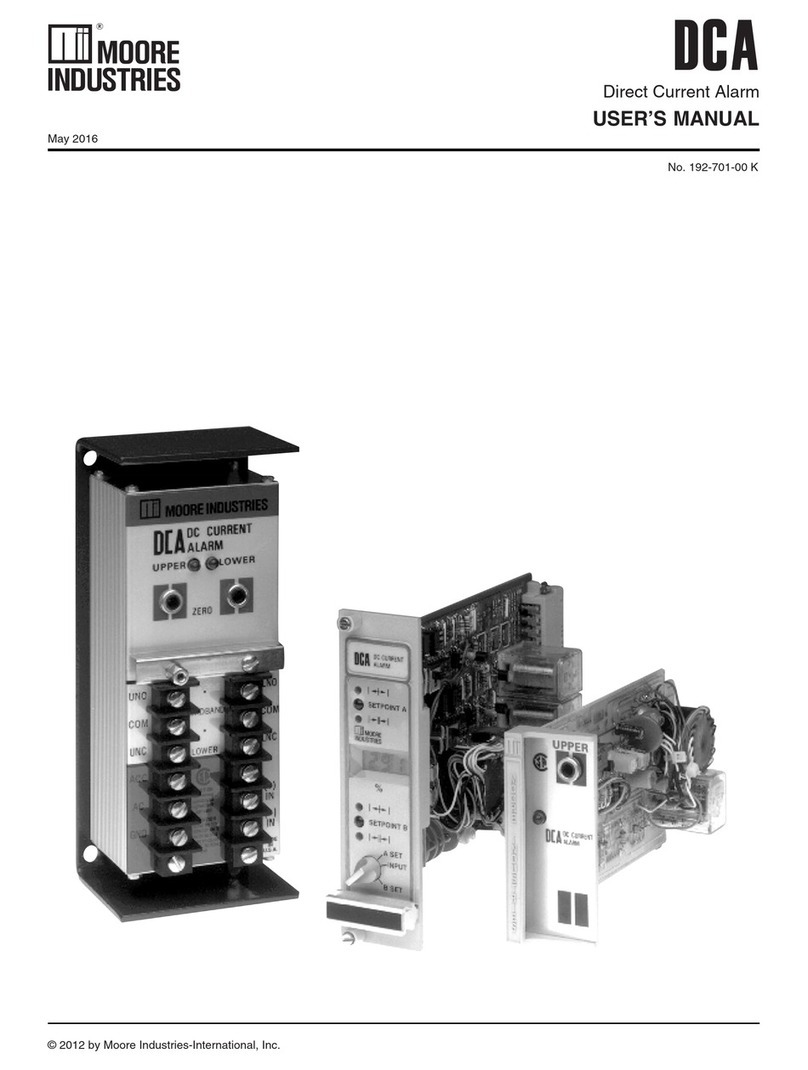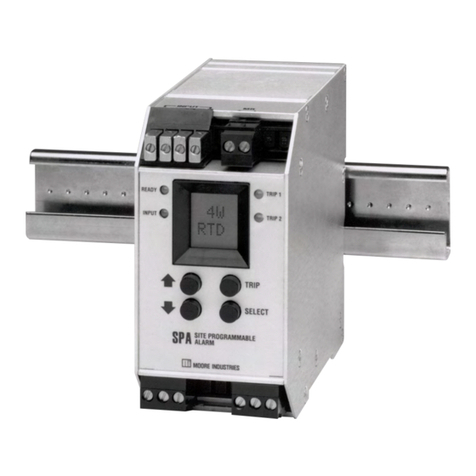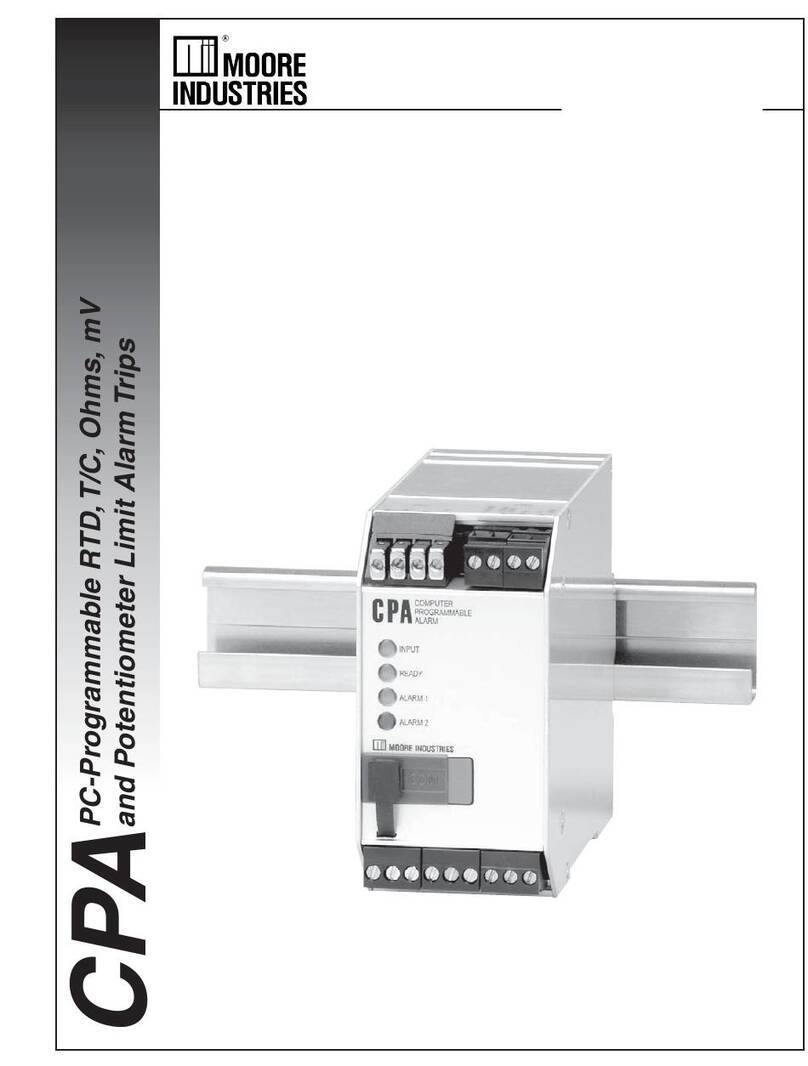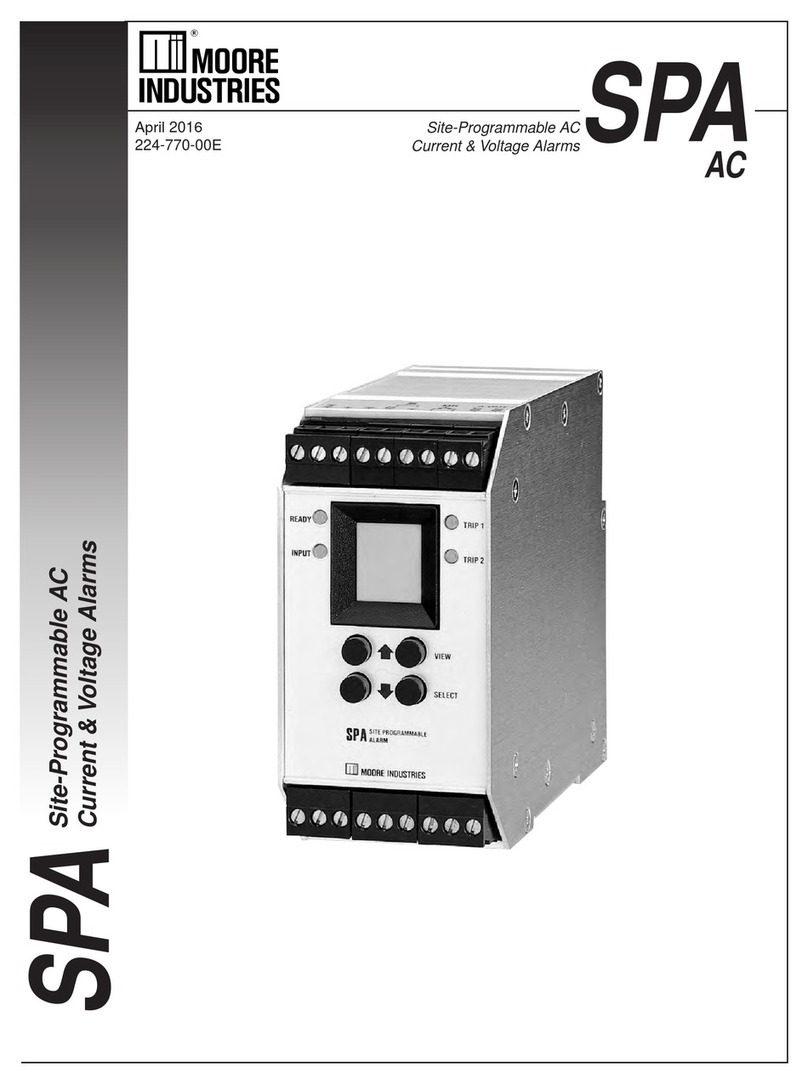
DDA
Page 1
The Interface Solution Experts
Introduction
Moore Industries’ DIN-style Direct Current alarm, the
DDA, accepts all standard process current and volt-
age inputs and provides an alarm response to input
that falls outside of an adjustable preset limit. The
DDA comes in single- and dual- alarm models. The
dual-alarm model allows two separate trip points to
be configured per module.
This manual contains the information necessary to
calibrate, install, operate, maintain, and troubleshoot
the DDA. It includes a brief unit description, a table
of performance and operational specifications, and
an explanation of Moore Industries’ model number
based product data tracking system.
The following guidelines are used throughout the
manual:
WARNING
– Hazardous procedure or condition that
could injure the operator.
Caution
– Hazardous procedure or condition that
could damage or destroy the unit.
Note
– Information that is helpful for a procedure,
condition, or operation of the unit.
Description
The DDA is a 4-wire, process alarm that is powered
by an external 24 Vdc power source. It accepts stan-
dard process current or voltage (factory-set) and re-
sponds to a user-adjustable trip point by changing
the output state when the input exceeds the trip point
setting. The output is either a normally-open (NO) or
normally-closed (NC) relay contact-closure (stan-
dard), or an opto-isolated, open-collector transistor
(optional).
The DDA is factory-set for single- or dual-alarm
operation. Standard single-alarm units have a
double-pole, double-throw (DPDT) relay output (out-
put A). Standard dual-alarm units have two single-
pole, double-throw (SPDT) relay outputs (outputs A
and B).
The standard DDA has a built-in 1.0 percent dead
band. The unit resets when the input signal has
crossed over the trip point on its return to the user-
selected non-alarm range, and is 1.0 percent of span
beyond the trip point.
The unit housing is a plastic, DIN-style case that can
be mounted on either a DIN-style top-hat rail (stan-
dard) or G-rail (optional). Refer to the Installation
Section for housing dimensions.
Specifications
Display Accuracy:
±0.1% of input span;
±1 count to include
repeatability,
hysteresis, and
adjustment
resolution
Repeatability: Trip
point repeats within
±0.1% of input span
Dead Band: 1% of
input span (stan-
dard)
Signal Response:
-3dB @ 5Hz typical
(low pass)
Alarm Response:
50 milliseconds
standard
Isolation: 500Vac,
input to output to
power
RFI/EMI Effect: With field
strengths of 10V/m, at
frequencies of 20-500 Mhz,
unit will not go into alarm
status unless process
variable is within ±1.0% of
trip point
Range: -18°C to 65°C
(0°F to 149°F)
Effect: ±0.018% of span/°C
Front Panel Adjustments
Type: Multiturn
potentiometers
Trip Point(s): Adjust over a
range of -5% to 105% of
span, typical
Input/Trip Point Viewing:
Two or three-position rotary
switch allows selection of
viewing the Input, Trip A, or
Trip B on the integral LCD
Internal Adjustments Type:
Multiturn potentiometers
Zero: Adjustable to ±10% of
span
Span: With full scale input,
output is adjustable to 100%,
±10% of span.
Display: 3½ digit LCD
displays either Input, Trip A
setting, or Trip B setting as
determined by rotary switch;
display indicates from -5.0%
to 105% of input span and id
linear with respect to the
input signal
Trip Point: Led(s) on front
panel indicates alarm status
for each trip point ("ON" LED
indicates energized relay)
297 grams (10.5 ounces)
Peformance Peformance
(continued)
Ambient
Temperature
Adjustments
Adjustments
(continued)
Indicators
Weight


































